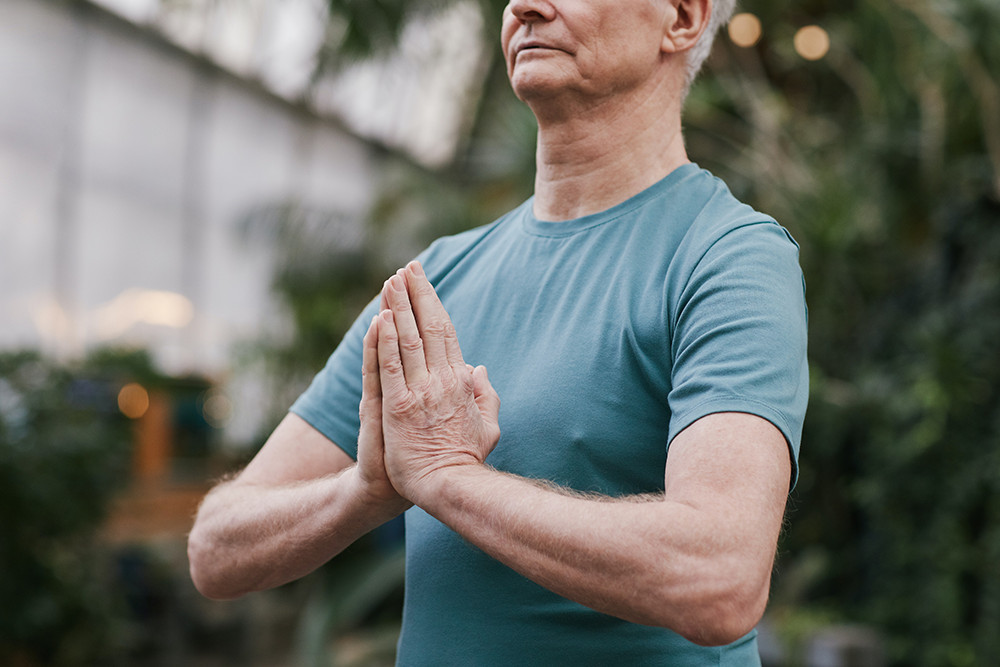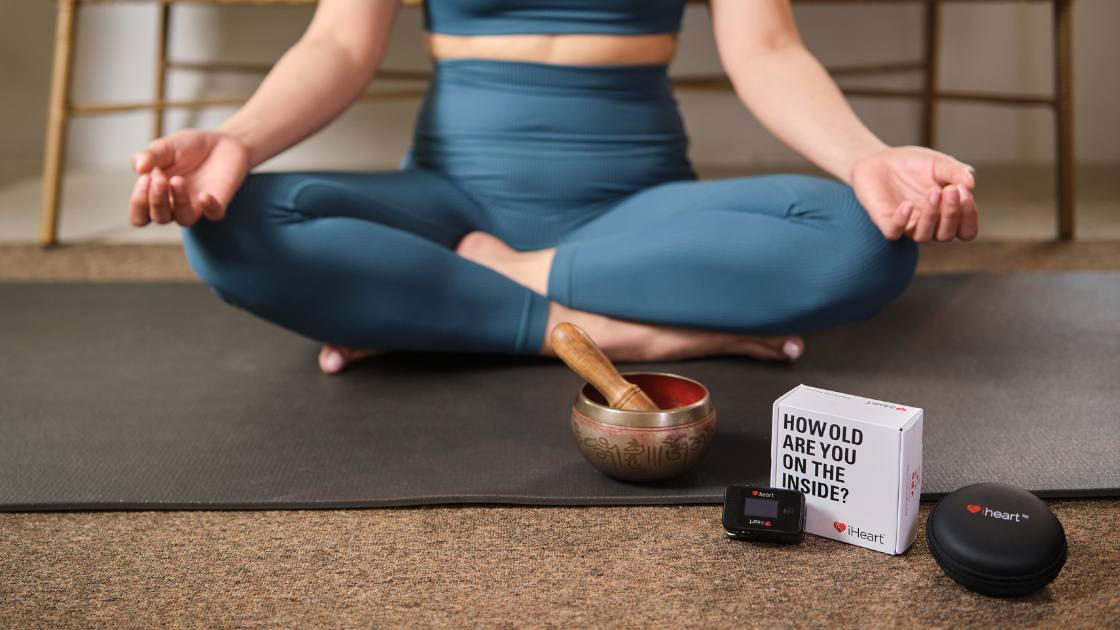You’ve just taken your first reading in the iheart HRV app and received your score. Now that you have a number corresponding to your stress levels, you might be wondering: what can I do with this information?
iheart HRV was designed for so much more than simply measuring your heart rate variability (HRV). It’s a starting point for transforming your whole-body health. By managing and lowering your overall stress, you can reduce aortic stiffness¹ and improve your internal mobility. Iheart HRV helps you accomplish this by providing you with immediate biofeedback and encouraging you to build stress-reducing habits.
If you’re ready to venture out on your personal health journey and find a calmer self, read on. This is our ultimate guide to getting the most out of the iheart HRV app.
How it Works
Using the fingertip sensor, sit and rest for five minutes while the iHeart HRV app analyzes your heart rate variability (HRV). You’ll be able to watch your heart rate and breathing in real-time. Once it’s done analyzing, it will assign you a score on a 1-100 scale, with 1 demonstrating maximum stress and 100 being the most relaxed possible.
Heart rate variability is a well-documented measure of your body’s stress response, since your heart rate varies depending on whether you’re in ”fight or flight” or “rest and digest” mode.

Understand how stress affects your overall health
To get the maximum wellness benefits out of the iheart HRV app, it’s important to understand what HRV and stress mean for your overall health. We recommend taking a look around our website and blog for lots of helpful information, starting with the post The Ultimate Guide to Heart Rate Variability.
If you’re short on time, here’s a brief overview: Low HRV scores may indicate that you are stressed, overtraining, or experiencing illness. High HRV scores demonstrate that your body is resilient, has good internal mobility (the opposite of aortic stiffness), and is able to balance these two modes effectively.
We talk a lot about aortic stiffness at iheart because it’s a fantastic indicator of overall health and longevity. A stiff aorta points to an increased risk of cardiovascular disease and decreased longevity. Keeping our aortas flexible and healthy is crucial to whole-body wellness and extending our lives.
Alongside poor diet and lack of exercise, another crucial factor that can lead to aortic stiffness is stress.¹
Thankfully, aortic stiffness can be reversed. Along with a healthy diet and regular exercise, managing stress will help promote the health of your aorta – and all your vital internal structures.

Learn how to “game the system”
Unlike iheart Internal Age and iheart Brain, which may take weeks to show changes or improvements in your internal health, the iheart HRV app can be “hacked” to change your results moment-to-moment. And that’s exactly how we designed it.
The iheart HRV app is not only useful in giving you an idea of how much stress you’re holding in your body today, but can be a fantastic learning tool to help you practice relaxation techniques.
As you take your readings and watch the line fluctuate on the graph, you can see how your heart rate and oxygen saturation are affected by your thoughts, outlook, and breathing. We encourage you to use this as an opportunity to learn how your body reacts to physical manifestations of stress, such as shallow breathing, rapid heartbeat, and tension.

Use the app to practice stress-reducing techniques
The instant biofeedback you get from the iheart HRV app can be useful for practicing relaxation techniques and building stress-reducing habits. While there are many ways to combat stress, there are two main techniques we can focus on while using the app:
- Diaphragmatic breathing
- Positive thinking
Deep, diaphragmatic breathing has many benefits, including improved internal mobility and encouraging better flow of the cerebrospinal fluid (which leads to a healthy brain). It’s also an excellent way to combat physical symptoms of stress and calm your nervous system by lowering your heart rate.
See what happens when you take slow, deep breaths through your nose and into your stomach while using the iheart HRV app. With regular practice, you’ll find yourself developing a habit of checking in with your breath throughout the day.
Cultivating a positive outlook is another essential component of stress management. You can test this out while using the app: try taking a reading after a difficult situation or think about something in your week that you’re not looking forward to. You might notice your heart rate increase, and you may get a score indicating higher levels of stress.
After that, try testing your HRV while thinking positive or grateful thoughts, and see how your score changes. We hope practicing these techniques will help you check in with yourself throughout the day and find intentional ways to manage your stress.

Share your results with your healthcare professional
If you and your healthcare professional – such as your doctor or therapist – are working on helping you manage your stress, you can tab through to different graphical illustrations (Poincare, LF/HF) of your HRV score and share them in an instant.
If your healthcare professional has the iheart Remote app and you want to work with them virtually, they can watch remotely as you take your readings and help you work on stress-reduction techniques in the moment.
Healthcare providers can learn more about how to use iheart Remote in their practice by visiting XX.
Sources






Share:
How to Get the Most out of the iheart Brain App
How to Get the Most out of the iheart Internal Age App